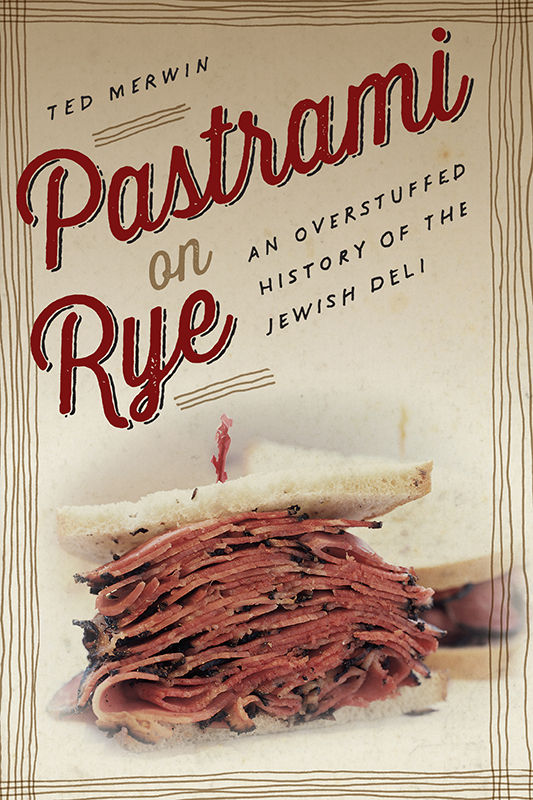
Pastrami on Rye
An Overstuffed History of the Jewish Deli
کتاب های مرتبط
- اطلاعات
- نقد و بررسی
- دیدگاه کاربران
نقد و بررسی

August 15, 2015
A pleasing exercise in culinary and cultural history, evoking some favorite New York-centric comfort foods. Forget the Big Apple: it's all about meat. Pastrami. Bologna. Sausage. Corned beef. "Judaism has almost always revolved around meat," writes Merwin (Religion and Judaic Studies/Dickinson Coll.). And if the apple represents forbidden fruit, well, that pile of steaming meat, just the right amount of fat and just the right amount of lean, represents...well, it's spoiling the fun to tell too much. Suffice it to say that the author, steering a sometimes-difficult course between academia and the mass market, does a solid job of locating the delicatessen-a German Jewish thing, helped along by Ashkenazi leanings and the cured meats of the Alsace-as a cultural and culinary center of New York Jewish life. Merwin delights in oddments of a sociological bent, as when he looks at the claims for the deli as an institution reinforcing marriage: a wife who might work outside the home could still have dinner waiting at the end of the day, leading to domestic tranquility; as one wag whom Merwin cites put it, "the secret of a good marriage...was to live near a delicatessen...if the range were stolen from some of his customers' kitchens, it would take a month before they would notice the theft." Much of the narrative is set in a time of Jewish immigration and the concomitant efforts to keep an anchor in the Old World by means of traditional food, Merwin closes at the end of that arc, with an assimilated Jewish culture that has both introduced the deli into wider ethnic circulation but also lost its insularity and adherence to the old ways, especially the insistence on keeping kosher-even if the treat on hand is kosher tapas. Less comprehensive and more impressionistic than Hasia Diner's Hungering for America (2002), but a nice, tasty nosh all the same.
COPYRIGHT(2015) Kirkus Reviews, ALL RIGHTS RESERVED.

October 1, 2015
The delicatessens that immigrant Eastern European Jews reimagined from their homelands became for many of these new Americans their prime gathering places; institutions reaffirmed Jews' ethnic identity through their Yiddish-accented owners and waiters. Expanding from Manhattan's Lower East Side, delis reached Midtown's Theater District, where they offered late-night meals and became full-fledged restaurants with long menus and fancy ingredients. Outer-borough delis were more likely to observe Jewish dietary restrictions long after city delicatessens abandoned them. Literature and movies turned places such as Lindy's into nationally recognized institutions, and the Reuben sandwich became almost as culturally familiar as the hamburger. Combining a flair for anecdote with exhaustive research, Merwin has produced an exuberantly readable history of delis, and he reveals how their prepared foods helped free early twentieth-century women from daily kitchen drudgery. The very success of ethnic Jewish delicatessens led inevitably to cultural assimilation for Jews and to appreciative acceptance by Gentiles, and the delicatessen became indisputably an American institution.(Reprinted with permission of Booklist, copyright 2015, American Library Association.)

























دیدگاه کاربران